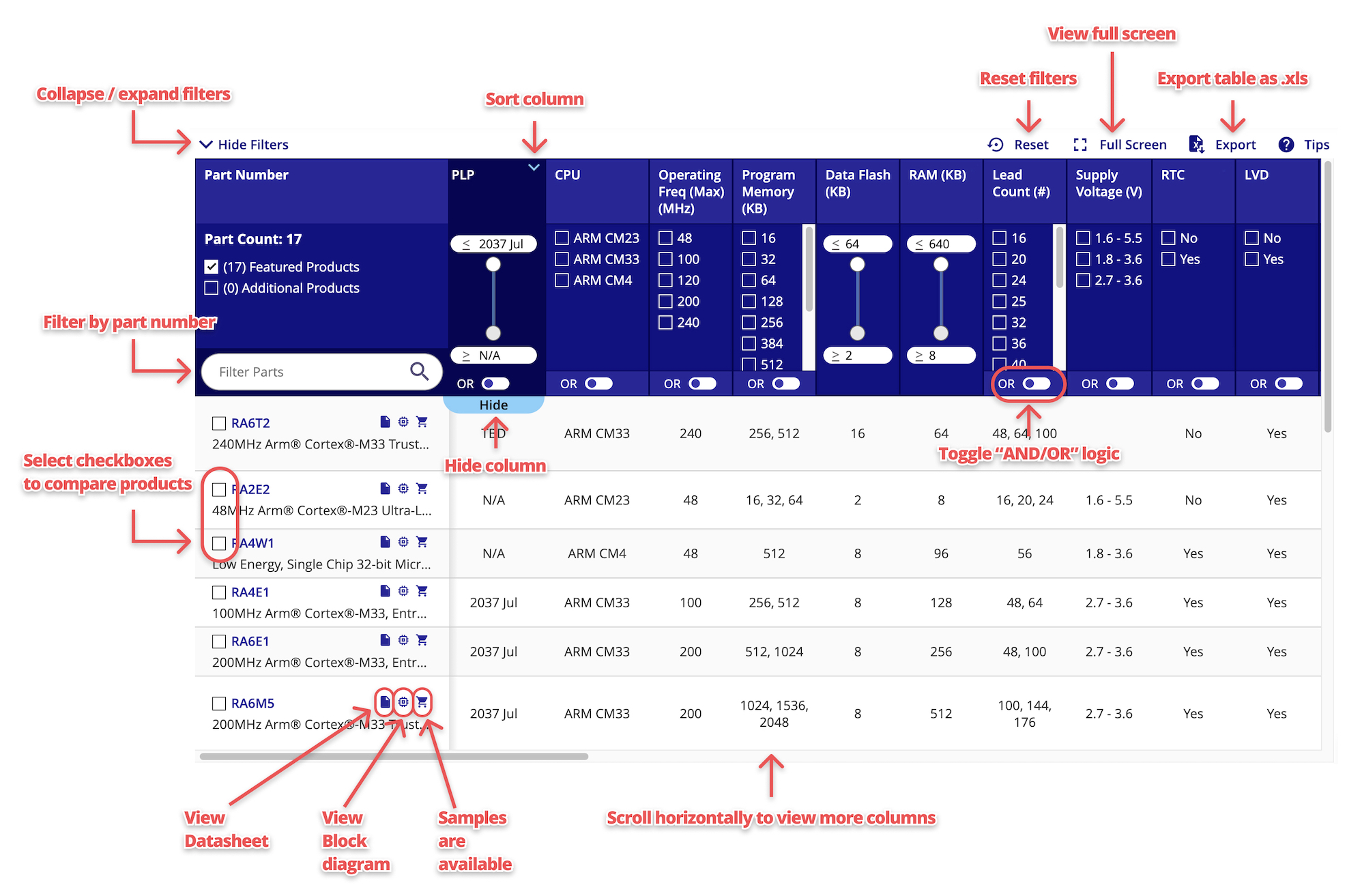
-
-
-
Design Resources
- Design & Development
- Featured Design Tools
- Partners
- Content & Training
-
Support
-
Support Forums
Get help from our expert Renesas technical staff and community.
- Technical Support
- Training & Events
- Quality & Packaging
-
Support Forums
-
Sample & Buy
-
Buy Direct from Renesas
Customers can now choose the convenience of buying direct from Renesas.
- Ordering Resources
-
Buy Direct from Renesas
Rad Hard Temperature Sensors

Renesas' radiation hardened two-terminal temperature transducers have a high impedance current output that allows them to be insensitive to voltage drops across long lines. These temperature sensors are ideal for remote temperature sensing in satellites and other space applications.
Product Selection Table
Linear Output Current (μA/k) |
Power Supply Input Range (V+ to V-) (V) |
Low Power Consumption at 5V (mW) |
50 krad(Si) Low Dose Rate (LDR) Shift |
High Dose Rate (HDR) (krad (Si)) |
Low Dose Rate (LDR) (krad (Si)) |
DSEE (SEL, SEB, etc.) (MeV*cm2/mg) |
SMD URL |
DLA SMD |
Pkg. Class |
Qualification Level |
|
|---|---|---|---|---|---|---|---|---|---|---|---|
| Part Number | |||||||||||
| Radiation Hardened, 2-Terminal Temperature Transducer | 1 | 33 | 1.5 | <1 | 300 | 50 | 86.4 | 5962-13215 | 5962F1321501V9A, 5962F1321501VXC | V | QML Class V (Space) |
| Radiation Hardened, 2-Terminal Temperature Transducer | 1 | 4 | 1.5 | <1 | 50 | 86.4 | 5962-13215 | 5962L1321502VXC | V | QML Class V (Space) |

Tips for Using This Parametric Table:
- Hide Filters button in header: Collapse or expands filters
- Column sort buttons in header: Sort Column alphabetically / numerically descending or ascending
- Reset button in header: Reset all filters to the page default
- Full Screen button in header: Expand the table to full screen view (user must close out of full screen before they can interact with rest of page)
- Export button in header: Export the filtered results of the table to an Excel document
- Filter parts search bar in header: Type to filter table results by part number
- Hide column button in column headers: Select to hide columns in table
- AND / OR toggle switches in header: Toggles the logic of this particular filter to be “AND” or “OR” logic for filtering results
- Multiselect checkboxes at beginning of each row in table: Select these checkboxes to compare products against each other
- Document icon next to product name in row: View the featured document for this product
- Chip icon next to the right of the document icon in row: View the block diagram for this product
- Cart icon to the right of the chip icon: Indicates that samples are available for this product
Documentation
|
|
|
|
|---|---|---|
| Type | Title | Date |
| Brochure | PDF 467 KB | |
| Brochure | PDF 4.85 MB | |
| White Paper | PDF 316 KB | |
| Application Note | PDF 338 KB | |
4 items
|
||
Videos & Training
See how the ISL71590SEH 2-pin temp sensor outperforms the current industry standard with assured accuracy in both low-dose and high-dose rate radiation environments.
Transcript
Hello, my name is Josh Broline, Product Marketing Manager for the Intersil Space Products. Today I'd like to talk to you about one of the most critical aspects of a given satellite system design and that is temperature monitoring or temperature sensing.
There are a couple of ways to implement temperature sensing today. One is a device called the 8590, is a two-pin temperature sensor, also thermistors or RTD's are commonly used as well. When a user has used this device called the 8590, there is a lot of concern because of the radiation performance that it will not perform as needed over the total mission life. As you can see, the performance is off by as much as 10 °C of accuracy error just over 25krad of low dose rate. Often times, this level of total dose is not acceptable enough for most mission lives. Also you can see the performance of high-dose rate, though not as bad, it still degrades pretty good up to a 100krad of total dose.
So in some cases, it may get to the point, if it's a very long mission, where they actually have to shutdown that part of the circuitry to make sure, A, it does not interfere with another part of the satellite, or B, they just don't care anymore about what that particular part of the satellite is providing them.
With the Intersil ISL71590SEH, you now have a simple solution that is radiation assured over low-dose rate and high-dose rate. Right away at low-dose rate, you'll notice the linearity or the graceful degradation of the performance this device over a wide range of low and high-dose rate exposure. For this device, we guarantee our solution, wafer by wafer, up to 50krad of total dose. Again you can see there that the performance is within 1 °C of accuracy out to 50krad of total dose.
Furthermore, we took this device and we exposed it to 150krad, and you can see it still has a nice graceful degradation. We took our solution out to 300krad of total dose and were within 1 °C of accuracy. Again, just showing the superior performance of our solution.
So with the ease-of-use of implementing this two-pin device that does not need external components to make the device linear over temperature, and the assurance that our specifications and our manufacturing capability provides, you'll have a device that you can count on for whether it's a mission that is one year or say 15 years long.
I encourage you to go to the ISL71590SEH product page on our website for more information, such as a comprehensive datasheet with typical curves and radiation curves, a single event report, total dose report, and evaluation report.